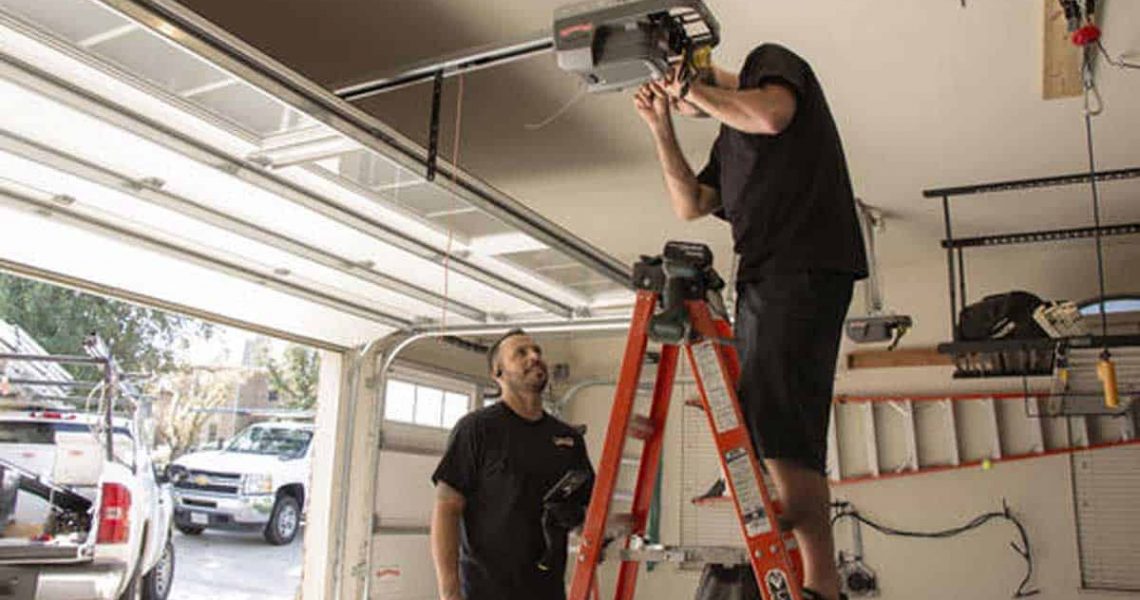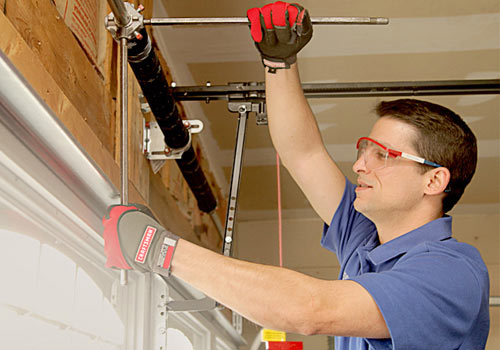Thorough Garage Door Service to Avoid Future Problems
Thorough Garage Door Service to Avoid Future Problems
Blog Article
Common Garage Door Troubles and How to Deal with Them
Garage doors are essential for both safety and comfort, yet they often provide a selection of common issues that can annoy property owners. While some concerns may show up uncomplicated to deal with, others may call for an extra nuanced understanding of garage door auto mechanics.
Noisy Garage Door Operation
A noisy garage door operation can be a considerable source of aggravation for homeowners, often suggesting underlying mechanical problems. Such disturbances may originate from various causes, consisting of worn-out rollers, loose equipment, or not enough lubrication. Determining the resource of the sound is important for reliable resolution.
One usual reason for excessive noise is the existence of rustic or damaged rollers. Gradually, these elements can weaken, resulting in grinding or squeaking audios as the door actions. Routine evaluation and replacement of these rollers can dramatically minimize noise levels. Additionally, loosened screws or screws in the door system can produce rattling audios during procedure. Tightening these bolts ensures a more stable and quieter movement.
An additional contributing element is insufficient lubrication of the door's relocating components. Using a top notch lubricating substance to the tracks, springtimes, and rollers can substantially lessen rubbing and noise. House owners must do this upkeep periodically to keep optimum efficiency.
Finally, the garage door opener might also generate noise as a result of its age or mechanical problems. If the noise continues in spite of addressing other aspects, speaking with a specialist for a comprehensive evaluation and possible repair service might be necessary.
Door Will Not Open or Shut
Experiencing a garage door that will not open up or shut can be exceptionally discouraging and frequently signals a breakdown within the system. A number of aspects can add to this problem, and determining the source is crucial for reliable resolution.

Following, examine the safety and security sensors situated at the base of the door. These sensors can become misaligned or obstructed by particles, stopping the door from running appropriately. Clean the sensing units with a soft towel and guarantee they are aligned.
Furthermore, the garage door's internal elements should be examined. Issues such as a broken springtime, damaged rollers, or a harmed opener can hinder activity. If any kind of elements seem damaged, it may be recommended to seek advice from a specialist for repair services.
Misaligned Tracks
(No-Fuss Service)Misaligned tracks can drastically interfere with the smooth operation of a garage door, resulting in functional failings such as uneven motion or full immobilization. This issue normally develops as a result of a range of factors, including damage, unintentional impacts, or inappropriate installation. When the tracks are misaligned, the rollers can stagnate openly, which not only stresses the electric motor however additionally presents safety and security dangers.
If you see any discrepancies, it is vital to resolve the problem immediately. Thoroughly touch the track back right into its appropriate placement using a rubber club or a similar tool, guaranteeing it is straight and degree.
When the positioning is corrected, retighten the screws to safeguard the track. For a more irreversible option, think about strengthening the tracks with additional brackets. Routine maintenance, including cleaning up the tracks and ensuring rollers are in great problem, can prevent future misalignments. By addressing misaligned tracks promptly, you can recover the performance of your garage door and boost its longevity.
Broken Springs
Amongst the various parts of a garage door system, damaged springtimes are one of the most usual problems that can considerably impede its capability. Garage door springs are crucial for balancing the weight of the door, permitting smooth opening and closing. When a spring breaks, it can lead to a door find more information that is tough to run or, in some cases, entirely inoperable.
There are 2 major sorts of springtimes: torsion springs, which are mounted over the door, and extension springs, discovered on either side. Signs of a busted spring include a door that won't open, a noticeable space in the spring, or a loud noise during operation. Attempting to run a garage door with a busted spring can trigger more damage to the door or the opener.
Repairing broken springtimes is not a do it yourself job; it needs specialized tools and competence as a result of the high stress involved. It is recommended to speak with a specialist technician that can securely replace the springs and make certain the door is effectively balanced. Regular maintenance and assessments can aid avoid springtime failings and extend the life expectancy of the garage door system.
Remote Issues

If the remote still stops working to operate, inspect the garage door opener to make certain that its sensors are clean and unblocked. Dust, debris, or imbalance may prevent the signal transmission between the remote and the opener.
Interference from various other electronic gadgets can additionally restrain remote functionality. Make sure that close-by gadgets, such as cordless routers or cordless phones, are not triggering interruptions. garage door service. If interference is thought, try moving these gadgets better away from the garage door opener
In some situations, the remote might need to be reprogrammed. Seek advice from the manufacturer's guidelines to reset the remote control and integrate it with the garage door opener. If all else fails and the remote remains to malfunction, consider seeking advice from a professional technician for a detailed examination and prospective replacement of the remote or opener.
Final Thought
(Clear Communication)In summary, typical garage door troubles can considerably influence capability and security. Addressing noisy operation entails lubrication and tightening hardware, while concerns with opening or closing call for evaluation of power sources and sensing units. Misaligned tracks can be corrected with modification, although busted springs require specialist treatment. Remote control malfunctions commonly occur from weak batteries or disturbance, which can be dealt with via substitute or reprogramming. Proactive maintenance and timely fixings can make sure optimum performance and longevity of garage doors.
Report this page